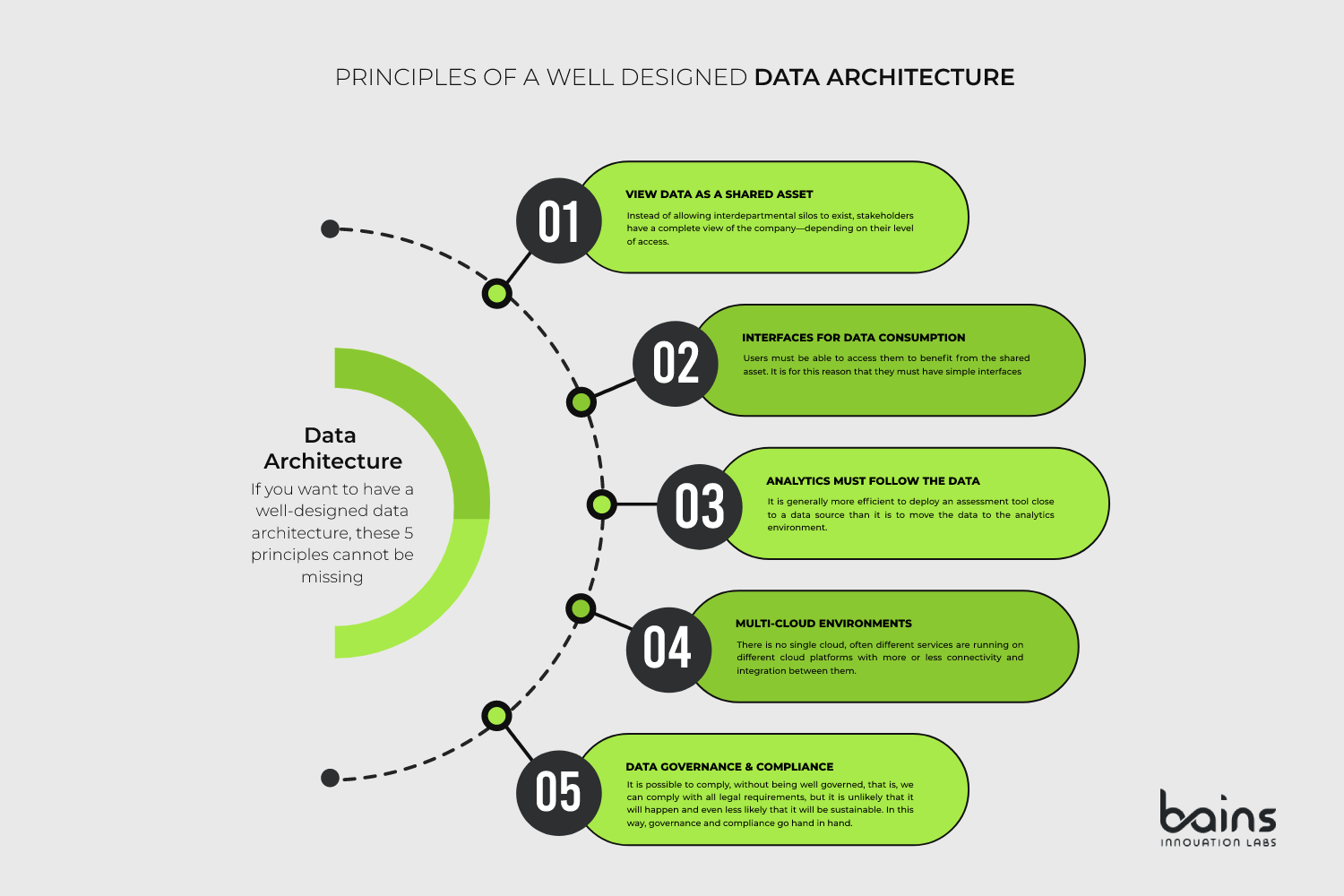If you want to have a well-designed data architecture, these 5 principles cannot be missing:
View Data As A Shared Asset
For a smooth flow of intra-company data, it must be viewed as a shared asset. Instead of allowing interdepartmental silos to exist, stakeholders have a complete view of the company—depending on their level of access.
This means managers gain a transparent view of customer insights with the ability to correlate information from all business functions, including manufacturing and logistics.
Provides Proper Interfaces for Data Consumption
Storing data in one place does not allow a data-driven organization to function well. Users must be able to access them to benefit from the shared asset.
It is for this reason that they must have simple interfaces to consume data that varies from one collaborator to another depending on their position in the ecosystem and the information they need to access to make their work more efficient.
Analytics Must Follow The Data
From the early days of data warehouses to the rise of business intelligence systems to today’s machine learning pipelines, this represents one of the most practical data principles: analytics follows data.
It is generally more efficient to deploy an assessment tool close to a data source than it is to move the data to the analytics environment.
Most analytics apps reduce the data to just the fields we need. With this in mind, it is more efficient to do the necessary data modeling, reduction, and configuration work in the source system.

Multi-Cloud Environments
At this point, we’ve talked quite a bit about the cloud, haven’t we? Now, what if I told you there’s something else? It sounds a bit confusing, but it has an excellent explanation.
There is no single cloud, often different services are running on different cloud platforms with more or less connectivity and integration between them.
For example, it is now common to use cloud-based CRM, expense management, and human resource systems. But if we need to analyze data in these applications, to measure costs and sales team effectiveness, we may need to integrate multiple platforms as part of our data architecture.
Cloud computing applications often have much better integration APIs and metadata than traditional applications; without the need for us to invest in a hardware and software infrastructure for it.
Do Not Confuse Data Governance With Compliance
With growing public concern about data privacy and ever-evolving data privacy laws worldwide, the use and abuse of business data is no longer a technical issue.
Compliance is easy to describe:
- Does the organization’s use of data follow laws and legal guidelines?
- Are the processes subject to country regulations or international requirements?
It is based on compliance with the regulatory body to which the process that is being attempted is subject.
Governance, on the other hand, feels a bit paradoxical. Seeks to make decisions the right way:
- Do you follow the best processes?
- Are you complying with the policies and procedures defined in advance?
Therefore, they include not only the best practices but also the commercial ones.
It is possible to comply, without being well governed, that is, we can comply with all legal requirements, but it is unlikely that it will happen and even less likely that it will be sustainable. In this way, governance and compliance go hand in hand.
Now that you know a bit about the principles of a well designed data architecture, if your organization is looking for big data consulting or data architecture consulting, feel free to contact us..